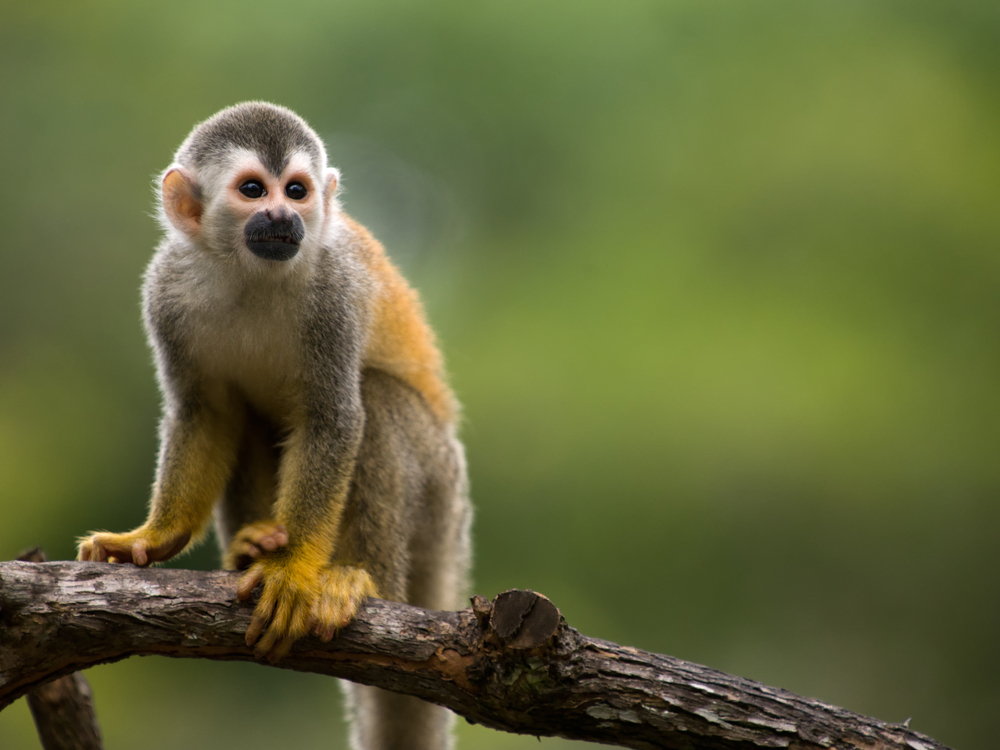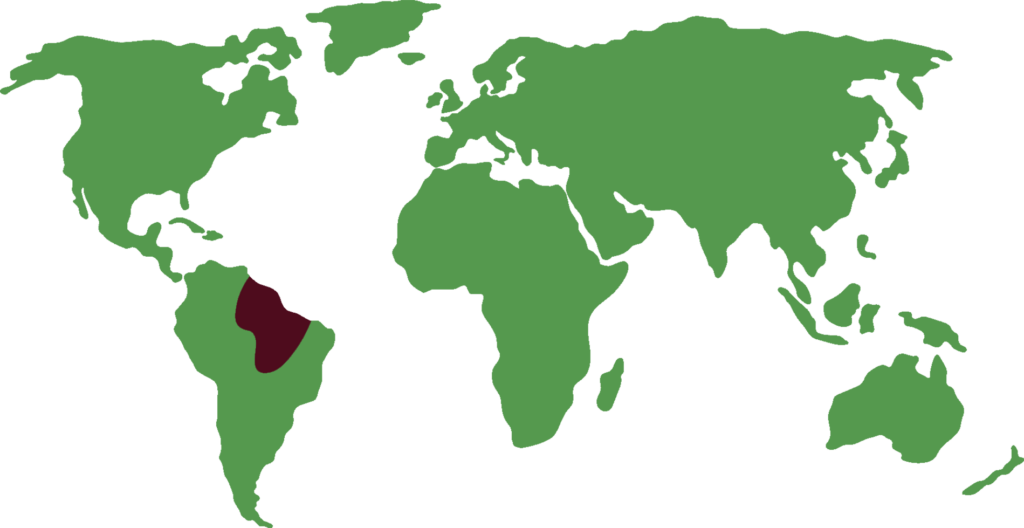GUIANAN SQUIRREL MONKEY
Saimiri sciureus

LENGTH

40 cm
WEIGHT

1,3 kg
LIFESPAN

20 years
The guianan squirrel monkey, generally known as the common squirrel monkey, is a small primate species native to South America.
General characteristics
The body of squirrel monkeys measures between 25 and 40 cm in length, with a tail that can measure up to 40 cm.
Their fur is thick and short and the colour is a mixture of grey, olive green and yellow, except on the belly and face, which is white with a black muzzle. The head is round shaped and the eyes are large and dark, with stereoscopic vision allowing good depth perception. The muzzle is also short and rounded.
Their limbs are long and slender, allowing them to easily grasp and climb tree branches. Unlike other American monkeys, their tail is not used for climbing, but as a kind of “balancing pole”.
Feeding
It is a mainly frugivorous-insectivorous species that feeds on fruits, berries, flowers, seeds, leaves, insects and other small vertebrates.
Behaviour
They have diurnal habits and spend most of their time in trees. They are social animals living in groups that can vary in size from a few individuals to 300 or even 500. Social relationships are maintained through physical contact, such as mutual grooming and the display of submissive behaviour.
The common squirrel monkey is an active and acrobatic animal. They move quadrupedally and are able to jump and move with great dexterity between branches. They are also very vocal and can communicate with each other using a variety of sounds, such as grunts, groans and squeaks.
Reproduction
This species is polygamous. When the breeding season arrives, the males become fatter and larger in size and even more aggressive.
The gestation period lasts approximately 5-6 months, after which a single calf is born. The mother takes care of the calf along with other females in the group, and at 6 months age, the calf is weaned.
Threats
There are no major threats to this species but the destruction of their natural habitat has made their population decrease.
Distribution
They inhabit tropical forests in South America, mainly in the Guianas, Suriname and Brazil.

Did you know?
They sleep with their tails curled up like squirrels, hence their name.
They have the largest brains, proportionately, of all the primates.
The thicker the males are, the more attractive they appear to females.
Conservation status
